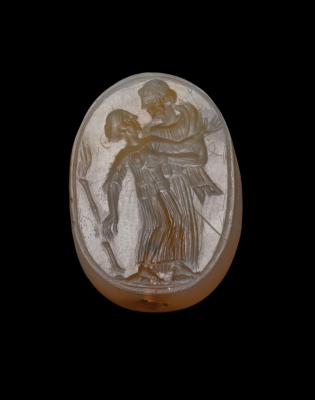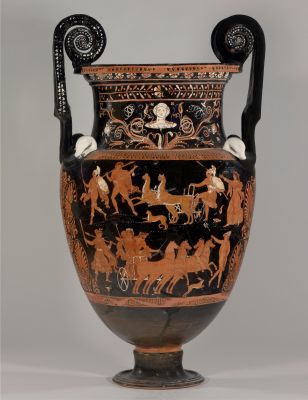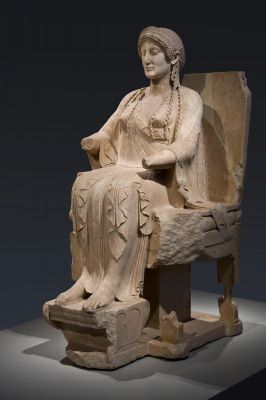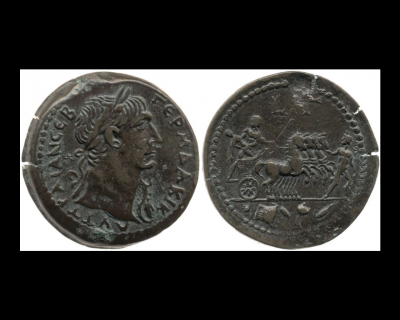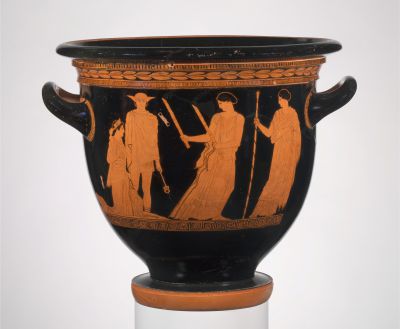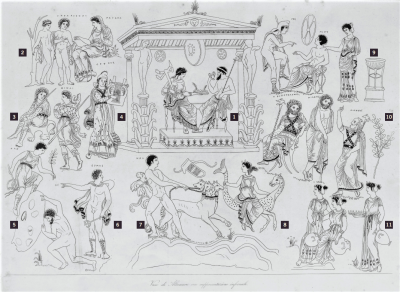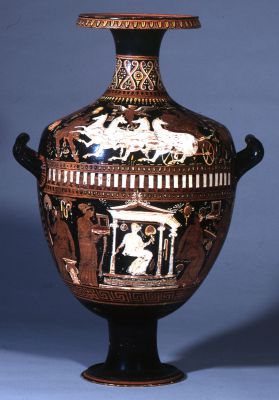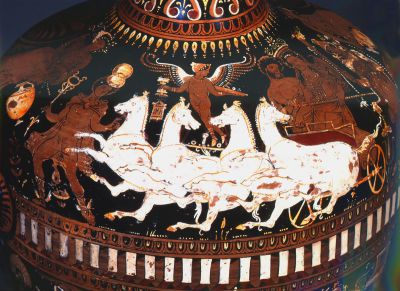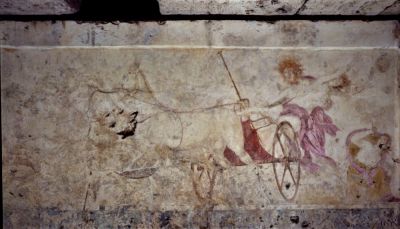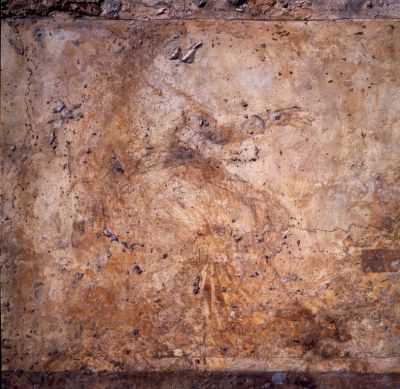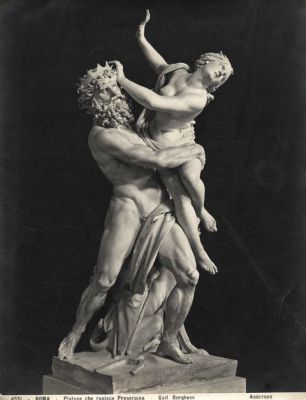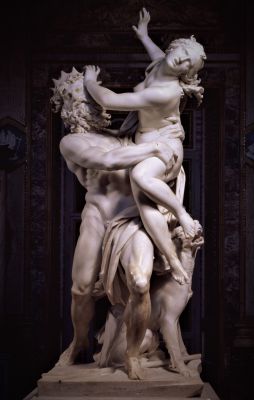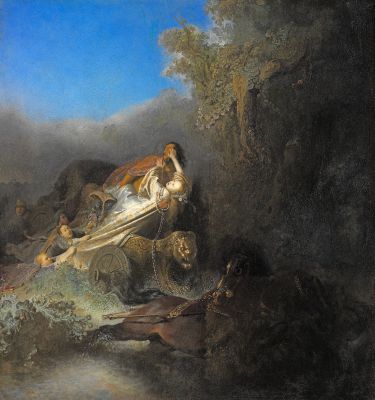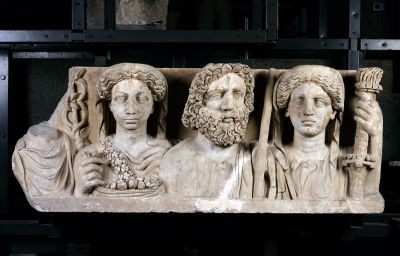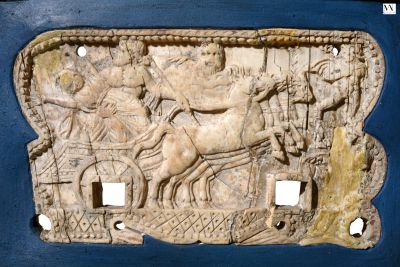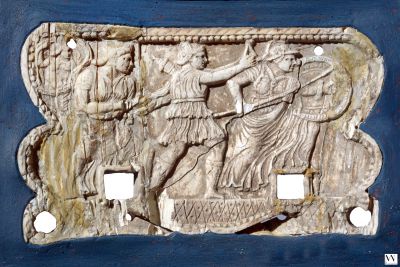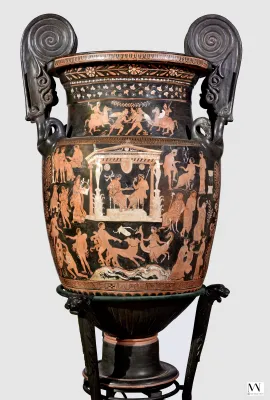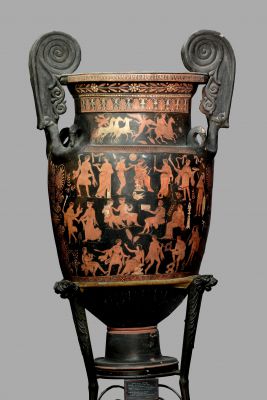
Persephone was the daughter of Zeus and Demeter. Hades, the god of the Underworld (who was commonly called Pluton), fell in love with her and abducted her as she was gathering flowers with the Oceanides (or, according to Diodorus, with Athena and Artemis) on the Nysian plain, a flowery meadow near Mount Pangaeon. This was accomplished with the complicity of Zeus while Demeter was absent. According to an ancient tradition preserved by Appian, near Philippi flowed the river Zygactes which Pluton had to cross with his chariot to return to his kingdom. The river, so the story goes, smashed the chariot’s yoke in order to save Persephone from her abductor but was unable to alter the girl’s fate: only Hecate and Helios heard her cries. For nine days the grieving Demeter wandered the earth in the form of an old woman, searching in vain for her daughter. The depth of her sorrow made the earth grow barren, unable to support human or animal life. Then Zeus was forced to arrange for Persephone to be returned to her mother. But Pluton, who wanted Persephone for his wife, gave her pomegranate seeds to eat, thus ensuring her return to the Underworld for part of each year. When she returns to her mother, the land blossoms and bears fruit, but while she is in the Underworld the land grows cold and unproductive – a lovely interpretation of the cycle of the seasons.




